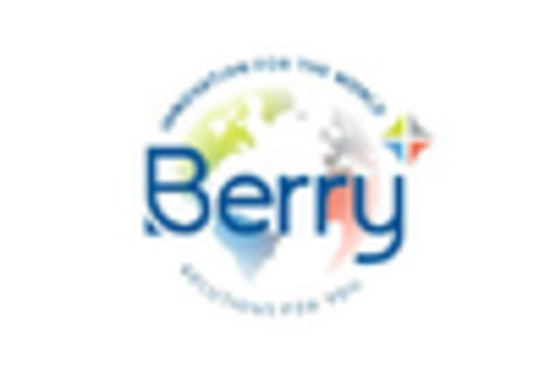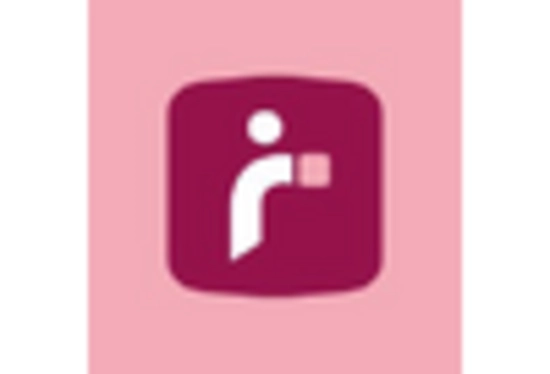Market Analysis
Smart Food Packaging (Global, 2025)
Introduction
The development of technology and the growing demand for convenience and sustainability are transforming the way in which food is packed, stored, and consumed. In the area of innovation, a number of solutions are being developed: smart labels, active packaging, modified atmosphere packaging, all of which are designed to ensure food safety, extend shelf life, and provide information on the freshness of food in real time. And as consumers become more health-conscious and more aware of the environment, smart packaging will play an increasingly important role in responding to these evolving preferences. The rise of e-commerce and the need to optimize the supply chain will also spur the development of smart packaging, which will not only improve logistics but also enhance the consumer experience. Hence the smart packaging industry will become a key player in the food industry, driving innovation and sustainable development.
PESTLE Analysis
- Political
- In 2025, the smart food packaging market is influenced by various political factors, such as the government's food safety regulations and food waste reduction policies. For example, the European Union has set up the European Union Green Deal, which stipulates that by 2025, all packaging materials must be reusable or re-usable. This policy has a direct impact on the smart packaging industry in the European Union, which has an annual turnover of about 15,000 billion. The number of companies, about 1 million, is affected. Also, the tariffs imposed on imported materials will have a certain impact on the cost of manufacturers, especially in regions that rely heavily on imports.
- Economic
- In 2025, the economic climate for Smart Food Packaging will be characterized by the growing demand for sustainable products, which will be met by the innovation of new packaging solutions. The investment in sustainable packaging technology will amount to more than twelve billion dollars by 2024. This will be in response to a growing tendency among companies to allocate more resources to the development of eco-friendly packaging. The average cost of smart packaging solutions will be around fifty cents per unit. This is competitive with the cost of conventional packaging and makes it a viable option for manufacturers seeking to extend the shelf life of their products and reduce wastage.
- Social
- The market is increasingly turning towards food packaging that is more sustainable and healthier. In 2025, a survey shows that up to 70 per cent of consumers are willing to pay a premium for smarter packaging that preserves freshness and reduces food waste. The millennials and generation Z are especially keen on this kind of packaging. Also, the rise of e-commerce has increased the demand for packaging that preserves the product during transport, and 60 per cent of consumers are concerned about the impact of packaging on the environment.
- Technological
- The development of technology is the mainstay of the market for smart food packaging, with the proliferation of innovations such as RFID tags and QR codes. By 2025, it is estimated that over 30% of food packaging will be fitted with smart technology that will enable the real-time tracking and monitoring of food products. Internet of Things (IoT) capabilities in food packaging are also expected to increase, and the number of connected devices in the food packaging industry will exceed one billion by 2025. This will facilitate the supply chain and enable consumers to make more informed choices.
- Legal
- The legal framework regulating food safety and the standards of food packaging is constantly changing, affecting the Smart Food Packaging market. In 2025, the FDA will impose stricter regulations on the use of materials in food packaging, especially on the subject of chemical leaching and the safety of consumers. To comply with these regulations, manufacturers will have to invest in certification and testing, which will cost at least $100,000 per product line. In addition, the intellectual property rights of smart packaging are becoming more strict, and companies need to master complex patents to protect their innovations.
- Environmental
- In the year 2025, it is estimated that the annual production of plastics will amount to three hundred million tons, a significant part of which will be used for food containers. By then, the market for biodegradable packaging is expected to grow to 10 billion dollars. And carbon footprints are also becoming fashionable, and many companies have already committed themselves to reducing their emissions of greenhouse gases by 25 percent over five years.
Porter's Five Forces
- Threat of New Entrants
- The barriers to entry are expected to be moderate in the Smart Food Packaging market in 2025. The high cost of research and development required for smart packaging solutions is expected to deter new entrants. However, the increasing demand for sustainable and efficient packaging solutions is likely to attract new players. There are many companies with strong brand recognition and distribution networks.
- Bargaining Power of Suppliers
- Suppliers in the Smart Food Packaging market are likely to have low bargaining power, owing to the wide availability of raw materials and components. Suppliers have been increasing their capacities, and technology has improved to the point where companies can easily switch suppliers.
- Bargaining Power of Buyers
- The buyers in the smart food packaging market will have a high bargaining power as they look for more cost-effective solutions. They will be able to bargain for a lower price, a higher quality and more features. The trend towards greater resource efficiency will also increase their bargaining power, as they can choose suppliers that share their goals for the environment.
- Threat of Substitutes
- The threat of substitutes in the market for smart food packaging is medium, since traditional food packaging methods still hold a considerable market share. However, as consumers become more aware of the advantages of smart food packaging, such as extended shelf life and improved food safety, demand for substitutes will increase. The suppliers of smart food packaging will therefore need to keep innovating in order to maintain a competitive advantage over the alternatives.
- Competitive Rivalry
- Competition in the smart food packaging market is expected to be high in 2025, mainly driven by the presence of a large number of manufacturers and rapid technological developments. Competition is expected to be mainly based on innovation, price and customer service, which will lead to the development of aggressive marketing strategies and price wars. In order to maintain their position in the market, companies must focus on differentiation.
SWOT Analysis
Strengths
- Enhanced shelf life and freshness of food products.
- Ability to monitor and track food quality in real-time.
- Increased consumer awareness and demand for sustainable packaging solutions.
Weaknesses
- High initial costs associated with smart packaging technology.
- Limited consumer understanding and acceptance of smart packaging features.
- Potential technical issues and reliability concerns with smart packaging systems.
Opportunities
- Growing trend towards e-commerce and home delivery services.
- Expansion into emerging markets with increasing food safety regulations.
- Advancements in IoT and AI technologies enhancing packaging capabilities.
Threats
- Intense competition from traditional packaging solutions.
- Regulatory challenges and compliance issues in different regions.
- Rapid technological changes leading to obsolescence of current solutions.
Summary
The market for smart food packaging in 2025 will be characterized by its strengths in terms of improving food quality and the environment and its weaknesses in terms of high costs and consumer acceptance. Opportunities will be found in the growth of e-commerce and in technological advances. Threats will be found in competition and in regulatory obstacles. Strategic focus on education and innovation will be crucial for exploiting strengths and opportunities and overcoming weaknesses and threats.

















Leave a Comment